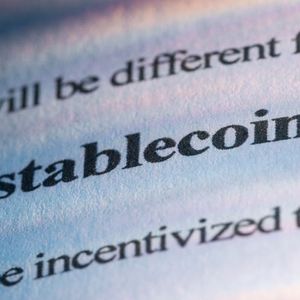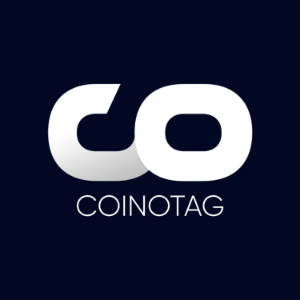Circle Internet: Scaling Beyond USDC Toward A Tokenized Economy Powerhouse
9 min read
Summary Circle’s IPO marks a pivotal moment for crypto-native finance, signaling Wall Street’s growing embrace of regulated digital assets. USDC remains Circle’s core revenue engine, with reserve income surging on the back of rising stablecoin circulation and U.S. T-bill yields. Beyond stablecoins, Circle is expanding into programmable wallets, smart contract services, and tokenization rails—building toward a broader financial infrastructure play. Circle’s tangible book value stands at an estimated $7.57 per share post-IPO, implying investors are paying a steep premium at current prices. The Circle Internet Group ( CRCL ) IPO is finally here. The IPO price was $31, but CRCL quickly went up over 100% on trading debut and closed day one trading at $83.23 (168% higher than IPO price). It’s been a long walk for Circle to this point, following the abandoned SPAC deal in 2022, and the long campaign that followed to position USDC ( USDC-USD ) as a fully transparent, compliant stablecoin within the emerging global financial infrastructure. Circle’s premier stablecoin USDC, currently the second most widely adopted stablecoin by market capitalization and transaction volume, boasts a ~$61.5 billion market cap and ~61.5 billion USDC in circulation and a ~29% of the total stablecoin market share. CoinGlass Circle also issues a euro-backed stablecoin, EURC, which has also been gaining traction, especially recently as EURC surged to a record supply in circulation in April in the wake of intensifying tariff tensions between the U.S. and Europe and a weakening dollar likely fueling demand for euro-pegged digital assets. EURC has also benefited from Tether’s withdrawal of its euro-backed stablecoin the Euro Tether amid the rollout of MiCA regulations across the European Union, which has seen a number of exchanges delisting USDT for E.U. users to comply with MiCA. EURC now holds the status as the go-to euro stablecoin option for regulated on-chain finance in Europe. With the global institutionalization of stablecoins accelerating, Circle’s strong record of regulatory compliance means it could benefit significantly if a similar regulatory framework to EU’s MiCA takes shape in the U.S., particularly as the current administration moves closer to enacting the GENIUS Act . This would likely position Circle as one of the first issuers eligible to offer “ Covered Stablecoins ” under a formal regulatory regime. Not Just A Stablecoin Story Anymore Circle has been synonymous with the USDC stablecoin to the point where mere mention of the company evokes its stablecoin in the minds of most investors – and for good reason. USDC remains the cornerstone of Circle’s operations (for now and for the foreseeable future). USDC is a regulated dollar-backed digital asset backed by reserves held in cash and Treasury bills. Circle earns income from the interest on the T-bills held in reserves. Coinbase (COIN), a strategic partner and co-founder of USDC’s original governance body, shares in the revenue USDC generates. As the first crypto-native financial infrastructure company to become publicly traded in the U.S., the IPO has generated significant anticipation across the financial and crypto-native circles. But once this initial IPO excitement fades, I believe a closer look at the company’s operations will emerge. Understanding this early helps investors frame the long-term prospects beyond just USDC or T-bills and interest on reserves. So is this Circle simply a story about stablecoins tied to T-bills, and interest income? The answer is an emphatic no. There’s more. Circle’s business model and product evolution over time shows a company invested in building an open internet financial system (and one that is highly regulated). The Circle Payment Network (Circle Whitepaper) …importantly, CPN does not move funds directly; rather, it serves as a marketplace of financial institutions and acts as a coordination protocol that orchestrates global money movement and the seamless exchange of information. – Circle whitepaper . At the core of Circle’s payment infrastructure lies the Circle Payments Network (“CPN”), designed for global money movement and serving as the central hub for Circle’s expanding ecosystem. This expansive network is fundamentally built upon a multi-layered infrastructure which comprises Circle’s robust stablecoin infrastructure, the banking and reserve management infrastructure that handles the backing reserves and the fiat on and off-ramps, and then the foundational blockchain infrastructure (which is multichain and supports the native issuance, transfer, and redemption of Circle’s stablecoins across multiple blockchain networks). With this tech stack, Circle provides the infrastructure and the medium of exchange (in the form of USDC and EURC), rather than being a traditional bank that directly handles fiat fund transfers between accounts. The actual movement of fiat funds (from fiat to USDC or EURC and vice versa) happens through Circle’s global banking settlement and reserve management infrastructure and partnerships with fiat banking providers that manage the on- and off-ramps. So basically, Circle facilitates the settlement rails and issues the programmable money layer, but doesn’t directly custody or move the underlying fiat, thus remains operationally distinct from a legacy financial institution. This infrastructure presents an economic moat for Circle, and understanding this infrastructure is critical for Circle investors. The infrastructure serves as a springboard, scaling Circle’s expansion into other tokenized financial ventures as the world’s financial system transitions from experimentation with blockchain technology into actual implementation and adoption. Building on this infrastructure, Circle has recently introduced USYC, a tokenized version of a U.S. Treasury money market fund, following the acquisition of Hashnote earlier this year. USYC represents a strategic expansion beyond fiat-backed providing stablecoins services, and into tokenized real-world assets (“RWAs”), which is currently one of the fastest-growing segments within digital finance. Just recently, an agency of the government of the UAE, the Dubai Land Department, launched real estate tokenization on Ripple’s ( XRP-USD ) ledger; and 7% or $16 billion of Dubai’s real estate is projected to be tokenized in less than a decade. This goes further to show how rapidly the tokenization of real-world assets is moving into mainstream adoption and large-scale implementation globally. Tokenized U.S. treasury (RWA.xyz) Unlike USDC or EURC, pegged to the dollar and primarily used for payments and settlements, USYC is yield-bearing, designed to allow users to hold tokenized exposure to short-term U.S. government securities. USYC commands about 5.5% of the tokenized U.S. treasuries, which currently sees a total market value of $7.32 billion. Tokenized U.S. treasuries have been growing in value, as we can see from the preceding chart, the market grew by over 400% between Q1 last year and Q1 this year. The market, which was around ~$4.1 billion at the beginning of the year, has grown by about 78% YTD this year. The expansion of USYC further strengthens the utility of USDC, as Circle builds a modular financial stack for on-chain finance. Together, both assets enable seamless movement between payment-ready liquidity and regulated yield-bearing instruments. This functionality mirrors the structure of traditional capital markets where cash and cash equivalents coexist with short-term yield instruments like money market funds, allowing institutions to manage liquidity and returns dynamically within the same financial ecosystem. Institutions will be able to toggle between liquidity and yield without leaving Circle’s ecosystem – a move that could make USYC the preferred form of collateral across crypto exchanges, custodians, and prime brokers. The USDC – USYC synergy could deepen Circle’s moat. The takeaway from the above discussion is that Circle is no longer just a stablecoin issuer. It is evolving into a regulated, multi-product financial infrastructure company at the heart of the tokenized economy. The tokenized economy is one of the most promising sectors to seek alpha in currently, because it is redefining how value is issued, transferred, and collateralized globally. Circle’s Financials, And Is CRCL Worth The Premium? Circle’s unaudited Q1 results paints the picture of a rapidly growing company that is benefiting from its core stablecoin ecosystem. USDC reserve income still overwhelmingly dominates the financials for now. Circle Amended S-1 In Q1, Circle showed a robust top-line growth, with total revenue and reserve income increasing to $578.6 million, which was an increase of 58.5% compared to the same period last year. The growth was largely driven by the Reserve income (from T-bills), which grew 55.1% YoY to $557.9 million. This was mainly supported by a 78% YoY rise in USDC in circulation . The model is simple – as more USDC gets in circulation, Circle earns more income from managing the underlying assets in the reserves. There was a 278% jump in revenues related to integration services – which is revenue that Circle earns primarily from providing services related to integrating its platforms or stablecoin with other systems or partners. This boosted the “other revenue” line. This jump is impressive and shows a growing demand for Circle’s tech stack and platform (though the actual figure of $20.7 million still remains materially low compared to Reserve revenues). The composition of “other revenues” is one line on the financials I’d closely monitor over time, as it has the potential to become recurring and present an alternative run-rate revenue stream for the company, potentially mitigating risk associated with volatile interest income from reserves whenever the Fed cuts rates, and also “desensitize” the whole top-line from interest rates sensitivity, Distribution and transaction costs increased in Q1 by about 68%, which comes naturally with the higher Reserve income, as 50% of the income is currently distributed to Circle’s partner Coinbase. This still links to the importance of diversifying “Other revenues” from sources like integration services and other enterprise services built on the CPN. And it’s a good thing that Circle has deliberately discontinued some products long before going public and mapped out a clearer strategic focus on regulated, scalable, and composable financial infrastructure. Transaction Services, which were related to the processing of USDC-native payment in which Circle acted in the capacity of a payment facilitator for Web3 merchants, were discontinued last year. The Circle Yield lending product was discontinued. Most crypto-focused investors know the regulatory headwinds that lending focused products have seen and continue to see. Moreover, the deprecated business contributed less than 1% to total revenue, thus not worth the regulatory and compliance headaches. Shedding these experimental and low-margin businesses has made Circle’s operations clearer and more attractive as a public company, supporting the case for a valuation premium from day one. Meanwhile, despite the rise in operating costs that come with scale, Circle grew operating income from continuing operations by 77.6% to $92.9 million, showing the company’s impressive operating leverage. Balance sheet (Circle Amended S-1) Circle’s operational strength is clearly mirrored in its balance sheet. Q1 results showed total assets of $62.26 billion, with most of it being “cash and cash equivalents segregated for corporate held stablecoin” of $60.14 billion (which are basically funds kept separate to fully back the stablecoins issued by Circle) – which saw a 36.9% YoY increase. The increase in the cash and cash equivalents segregated for corporate held stablecoin was matched with a similar increase in liabilities showing “deposit from stablecoin holders” also increasing by 37.2% YoY to $59.98 billion. The matched increase confirms Circle’s tight 1:1 backing of its stablecoin and are line items that reinforces trust in Circle’s stablecoin model. Circle Amended S-1 Circle’s capital base has also strengthened meaningfully. Stockholders’ equity rose 30.6% to $745.0 million in Q1, and goodwill climbed 56.9% to $266.1 million (likely linked to the acquisition of Hashnote in January). The preceding numbers don’t yet reflect the capital injection from yesterday’s IPO in which 14.8 million primary shares were issued at $31.00, raising roughly $435.9 million in net proceeds (after I factored in typical IPO expenses of around 5% for underwriting and others), which is a fresh liquidity boost that immediately bolsters Circle’s post-listing cash position and equity base. Circle Amended S-1 Using the preceding figures and Circle’s March 31 pro forma net tangible book value per share as my starting base, I estimate an adjusted net tangible book value of around $7.57 per share. This is derived by subtracting intangible assets like the $266.1 million goodwill from total stockholders’ equity ($745.0 million), and adding net IPO proceeds of approximately $435.9 million (after factoring in an estimate 5% IPO expenses), and dividing by the estimated 258 million fully diluted shares (which is based on the $8.06 billion IPO valuation at $31 per share). It implies IPO investors paid a $23.43 per share premium to tangible book value. With shares closing at $83.23 yesterday, the market is now placing a $75.66 per share premium on Circle’s tangible book value. Is this premium justified? While the $7.57 net tangible book value implies a steep premium at the current price, I believe the valuation gap reflects Circle’s high trust profile. We’ve already seen how the balance sheet shows the company’s matched backing of its stablecoins. Other factors like the strong operating leverage despite costs, and the company’s positioning at the intersection of stablecoins adoption and the growing infrastructural relevance in RWA tokenization prompt my initiating coverage on CRCL to lean towards a Hold rating. CRCL isn’t cheap by book metrics, and its premium isn’t irrational either.

Source: Seeking Alpha



